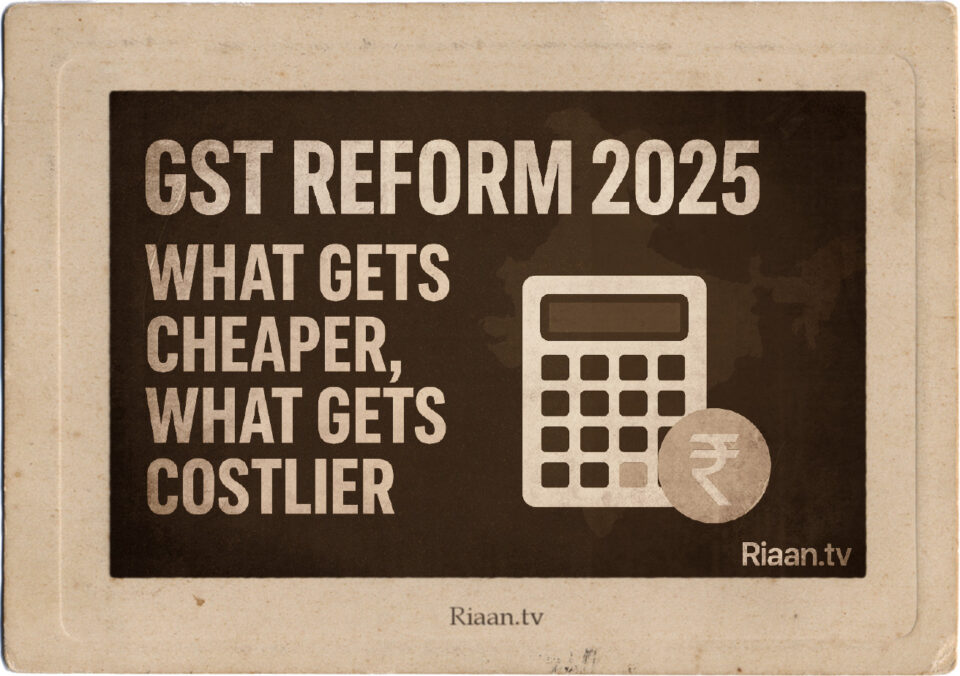India is entering a new era of taxation with the launch of GST Reform 2025, popularly called GST 2.0. After months of deliberation, the GST Council has approved a simplified tax structure that will come into effect from September 22, 2025. The reform is being hailed as one of the most significant steps in India’s indirect tax history, aimed at reducing consumer burden, boosting economic activity, and streamlining compliance for businesses.
A Simpler GST Structure
The earlier GST system had four slabs—5%, 12%, 18%, and 28%—which often created confusion for both consumers and businesses. GST 2.0 reduces this complexity by moving to a two-tier framework:
-
5% for essentials and services of mass consumption
-
18% for most other goods and services
A special 40% slab will remain only for luxury and sin goods such as tobacco, large SUVs, and carbonated drinks.
This simplification is expected to not only ease compliance but also make pricing more transparent for consumers.
What Becomes Cheaper
One of the biggest takeaways of the reform is the reduction of tax rates on daily-use items. Consumers will feel the difference in their monthly budgets as products like shampoos, toothpaste, packaged foods, and certain medicines shift to the 5% bracket.
Daily services such as gyms, barbers, salons, and yoga sessions will also attract just 5% GST. In addition, small cars, motorcycles under 350cc, air conditioners, televisions, and dishwashers will now be taxed at 18% instead of the earlier 28%, making them more affordable for the middle class.
A Major Relief: Insurance Becomes Tax-Free
Perhaps the most widely welcomed move is the government’s decision to make life and health insurance completely tax-free. This step directly benefits families, senior citizens, and individuals with medical coverage, reducing their financial burden and encouraging more people to opt for insurance.
Who Will Pay More?
While most consumers benefit from lower taxes, there are a few areas where rates have gone up. Apparel priced above ₹2,500 will now attract 18% GST instead of the earlier 12%. Luxury and sin goods will continue to be taxed at the highest slab of 40%, ensuring that premium consumption continues to generate revenue for the government.
Business and Compliance Reforms
For businesses, GST 2.0 addresses long-standing issues such as inverted duty structures, which often created refund delays and cash flow problems. The government has also announced the setting up of a GST Appellate Tribunal (GSTAT) by the end of this year, with hearings expected to begin in December. This is expected to speed up dispute resolution and reduce the backlog of cases.
Economic Impact of GST 2.0
Economists believe the reform could reduce inflation by more than 1 percentage point by cutting down prices of essential items and appliances. Lower costs are likely to spur consumption, which in turn will give a boost to sectors like FMCG, automobiles, insurance, and consumer electronics.
Although the government may face an estimated revenue loss of ₹48,000 crore, the move is seen as a strategic investment in India’s growth story. Increased demand, higher compliance, and a stronger consumer base are expected to offset the short-term revenue dip.
A Festive Gift for the Middle Class
The timing of the reform is also symbolic, as it comes into effect just ahead of the festive season. For millions of households preparing for Navratri, Diwali, and year-end celebrations, cheaper essentials, electronics, and vehicles will feel like a festive bonus.
Conclusion
The GST Reform 2025 marks a turning point in India’s taxation landscape. By simplifying the structure, reducing the tax burden on essentials, and making insurance tax-free, the government has taken a consumer-friendly approach while also boosting business confidence.
For the middle class, this reform translates to real savings. For businesses, it means easier compliance. And for the economy, it promises stronger growth in the years ahead. GST 2.0 isn’t just a tax reform—it’s a step toward building a more inclusive and consumption-driven India.

